Yes, You Can Supercharge Your Portfolio!: Six Steps for Investing Success in the 21st Century
$14.54
| Author(s) | , |
|---|---|
| Format |
|
| Pages |
205 |
| Publication Year |
2008 |
In Yes, You Can Supercharge Your Portfolio! Ben Stein and Phil DeMuth show you how your current portfolio is radically underdiversified, costing you money. They offer step-by-step instructions to supercharge it across a variety of investment situations to get you the best risk-adjusted returns.
Most investors spend their time worrying about selecting individual stocks and mutual funds: big mistake! Modern Portfolio Theory—developed in 1952 by economics Nobel Prize winner Harry Markowitz—shows that it’s more important to focus on how our securities interact as a whole. Astonishingly, most investors—including many professionals—still run their investment accounts the same way people did back when “How Much Is That Doggie In the Window” played on the Hit Parade. It’s time to apply what we’ve learned in financial economics over the past 50 years to bring your portfolio into the rock-’n-roll era.
Armed with a computer, you, the investor, can use sophisticated tools to analyze your holdings—tools that would have been the envy of the biggest money managers only a decade ago. First among these is the Monte Carlo simulator: the better mousetrap that investors have been waiting for.
Contents:
- Step 1: Don’t Skip Step 1
- Step 2: It’s Your Whole Portfolio That Matters
- Step 3: Take on Risk Intelligently
- Step 4: Diversify
- Step 5: Use the Monte Carlo Simulator to Test-Drive Your Portfolio
- Special Topics: A Farewell to Bonds?
- Special Topics: Roll Your Own Hedge Fund
- Special Topics: Investing for Income
- Step 6: Do a Portfolio Reality Check
Yes, You Can Supercharge Your Portfolio!: Six Steps for Investing Success in the 21st Century By Ben Stein, Phil Demuth pdf
15 reviews for Yes, You Can Supercharge Your Portfolio!: Six Steps for Investing Success in the 21st Century
Clear filtersOnly logged in customers who have purchased this product may leave a review.

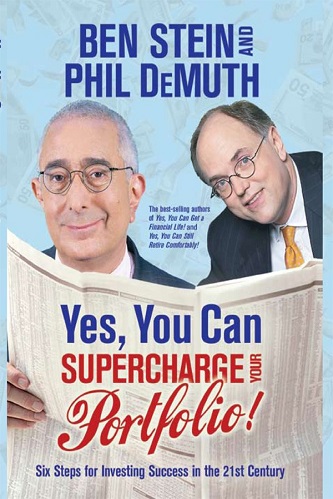
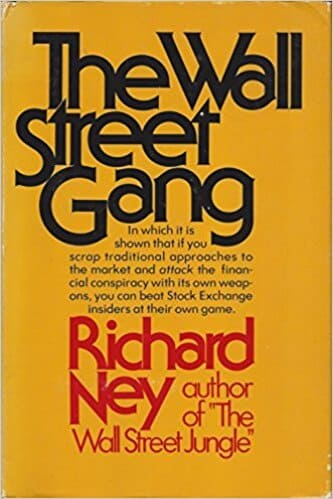
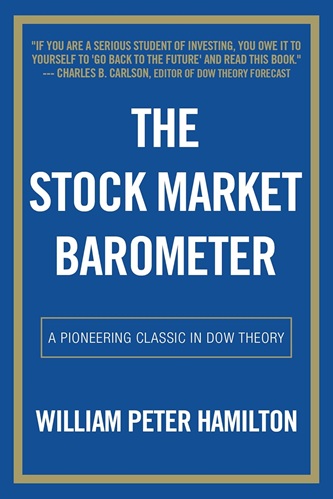
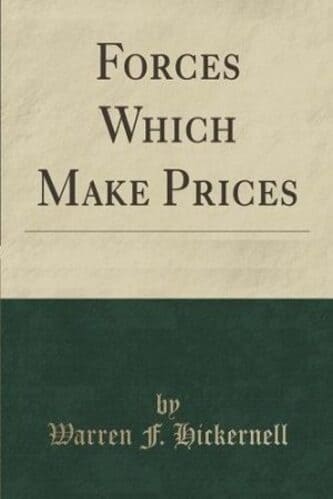
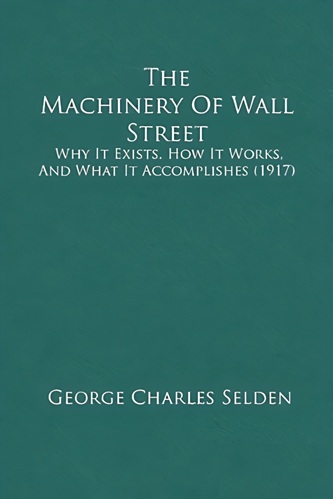
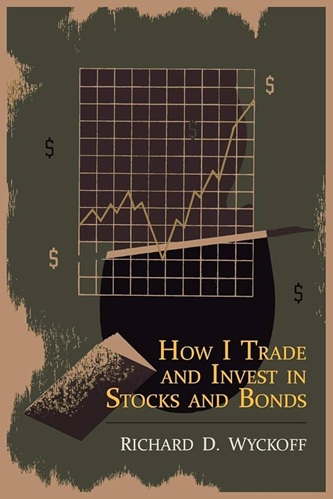
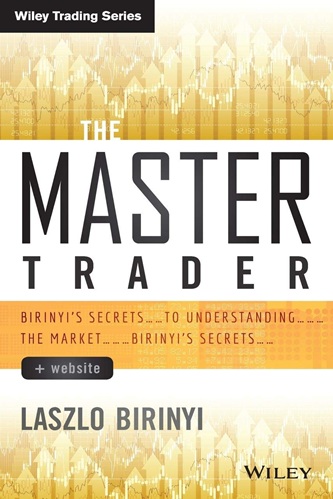

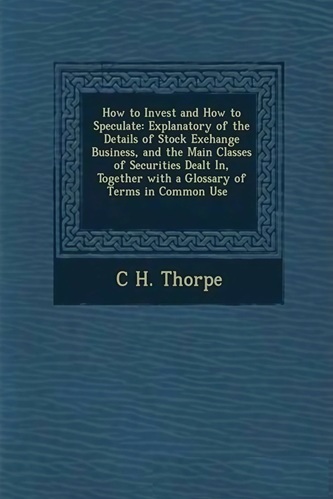
Noe Jacobs (verified owner) –
Lots of relevant information
Alaia Goodman (verified owner) –
I find Ben Stein to be one of the most intelligent and witty financial whizzes of today. Not only does he offer sound investment practices but he does it in a comical way reminiscent of Louis Rukeyser, another one of my favorite financial gurus. I highly recommend any of Ben Stein’s books as you’ll never be disappointed.
Alexander Miles (verified owner) –
Ben Stein and Phil DeMuth have a great way of explaining investing to the layman. I own and have enjoyed all their previous books. This book is a great primer on portfolio theory and diversification — the only “free lunch” in investing. They tell you exactly how to diversify your portfolio to get the return you require for the least volatility and risk. Volitility in particular should be on everyone’s minds after the the first 3 months of 2008 when the Dow Jones Industrial average moves more than 200 points in a day consistently. There is a saying on Wall Street that you can either “eat well” or “sleep soundly at night”. By diversifying and reducing volitility, you can do both.
Camilla Kane (verified owner) –
i was looking forward to reading this book.
how disapoinded i was… authors are basing their portfolios on montecarlo results… fine… but when they are also optimizing the very same portfolio with shares of stocks, then, i understood that they did not understand what they were doing…
i can imagine that an index or an asset will yield some results in the future based on what they did in the past … since they are acting as a group, thus mutualizing risks..;
if you base the future of a stock movement based on what it did in the past, even for tens of years, you are forgetting that a compagny can disapear… check the Dow from 1929 to now…
Eva Galindo (verified owner) –
Yes, You Can Supercharge Your Portfolio and the accompanying software are a significant contribution to the individual investor. Following in the lineage of their popular investment book series, Ben Stein and Phil DeMuth have again charted new territory by demonstrating the principles and concepts of portfolio theory through portfolio examples and the use of a special software. Portfolio theory shows that it is more important to focus on how our securities interact as a whole. By way of examples they show how the ordinary investor embarks on the path of investing. Unknowingly this path is very risky and subject to possible failure. The book progresses from risky investment strategies to less risky with high yielding results and portrays the development of “typical” and “optimal” strategies spanning the ordinary investor’s lifetime. By example the book shows what to avoid and what to emulate and the reader is given a choice as which path they may wish to follow. The center piece of the book is the concept of the Core Portfolio which is “supercharged” by the addition of hand picked securities. Over a lifetime of investing such supercharging could by way of compounding make for significantly greater yields, possibly cutting off years of having to work or having to work much longer than anticipated prior to retirement for not following this simple but effective piece of advice. Also, an all stock portfolio is demonstrated for the more sophisticated, mature investor.
The Supercharge book is a start point in one’s effort at understanding and investing using the principles and concepts of portfolio theory investing. The software, Quantext Portfolio Planner (QPP) which was developed by Geoff Considine of Quantext, Inc. ([…]) really puts the investor in the driver’s seat creating a viable portfolio by contrasting and comparing portfolio alternatives. Once one has devoured the Supercharge book the reader will certainly want to give QPP a test run (30 day free download) and access the multitude of white papers Considine has written on the subject of portfolio theory investing and Monte Carlo forecasting which is available at his web site. Geoff Considine deserves the highest level of praise for creating QPP for the individual investor. Here-to-for only large investment houses have had access to the computing power of this type of software.
Who is this book for? The book and accompanying software is for any individual investor or investment advisor wishing to test out a portfolio before investing any money in the market. Additionally, the book and software are ideally suited for investor education courses such as an introductory college course, adult education (high school and community college) or in a high school investment literacy course.
Rosalyn Garrison (verified owner) –
I will not review ground related to the book that has already been so ably covered here. Instead I want to relate my own experiences as to the improvement of portfolio composition that can be achieved both with this book and especially with the Quantext software they use throughout. Most people will likely arrive at the Quantext software by reading this book. I came at it from the opposite direction. Full disclosure; I have been investing since 1999 an have been an avid student of the markets, different approaches to the markets (including many variations of fundamental and technical analysis), and market history ever since. I have no affiliation or interest in Quantext other than the value I find in its use.
The star of this exploration is the Quantext software but “Yes, You Can Supercharge Your Portfolio!” brings the sophisticated concepts of risk/reward balancing into an easily understandable format with excellent examples as a point of departure. The only other Stein/DeMuth book I’ve read is “Yes, You Can Time The Market!,” which I bought a couple of years ago and reread recently after appreciating the content of this recent book. They are different books entirely but both really useful in taking sophisticated market studies and making them easily accessible.
Now to the meat. The basic concept of modern portfolio theory (MPT) is that there is a relationship between the risks you take on and the reward you should expect for taking that risk, but that there is a way to optimize that risk/reward balance. Reward is measured by returns and risk is measured by standard deviation. The engine behind the benefits of MPT is proper diversification, but this is a subject that many investors really don’t understand. Dividing your assets between domestic large caps, mid caps and small caps offers almost no diversification at all as these asset classes are highly correlated to each other; meaning that when one class goes down they all tend to go down, and vice-versa. A properly allocated portfolio should have a handful or two of non-correlated asset classes so that when some things are going down others are going up or staying stable. Other asset classes might include real estate, commodities, developed and emerging foreign markets, or riding different sectors. With the broad array of ETFs available these days finding diverse vehicles to invest in has never been easier. The point is to make your overall portfolio as limited in volatility as possible without giving up the potential for good returns. Intuitively the advantages of this don’t make much sense to some people but a simple example should illuminate the concept.
Suppose you had the following performances over a four year period. Which would you prefer?
A) 10% 10% 10% 10%
B) 5% 32% -15% 18%
C) 18% -15% 32% 5%
D) 8% 13% 11% 8%
They all average 10% a year but because of the volatility of returns they compound differently. If you invested $10,000 this is what your money would’ve grown to after the 4 years (no expenses or contributions are assumed for ease of demonstration).
A) $14,641
B) $13,902
C) $13,902
D) $14,630
The least volatile portfolio, the one that achieved 10% every year, compounded the best. Obviously that’s an unachievable level of consistency but the point is clearly demonstrated that the less volatile the portfolio the better for the overall returns.
Any time spent using the Quantext software leads you to the typical case for an investment vehicle being that you can expect the standard deviation to be twice the expected return. (There are a range around these results, of course, which leads to opportunities as well). If the return is 15% then the standard deviation is likely around 30%. This means that the portfolio is expected to achieve a return of 15% +/- 30%, or -15% to 45% in any given year. With proper diversification the ideal can be brought down on a portfolio level to a one to one relationship; i.e. a 15% return with a +/- 15% deviation, or 0% to 30% expectation. Yes, the top end of the potential returns comes down but the low expectation comes up equally to make a tighter and less damaging expectation of returns. That’s the essence of a less volatile portfolio.
This is all well and good but there are a number of portfolio analysis tools that can help you analyze these factors. The difference with Quantext is a very important one though. While most tools look at historic returns and deviations and project those same numbers forward, Quantext takes the historic ranges and projects future probabilities using a “reversion to the mean” methodology. In other words, what has been achieving a return recently far above what markets typically have given over the long term can be expected to underperform in the future, and vice-versa. Also, what has had low volatility recently compared to the long term can be expected to show increasing volatility in the future, again vice-versa. The creator of the software claims that this methodology is almost twice as accurate as using the historical data projections, as most analyzers (and analysts!) do. My own experience is that it is indeed a better approach, although all users are cautioned to do their own due diligence. Intuitively for many investors this approach would make sense. Stocks that have been hot are likely overvalued and due to correct. Stocks that have underperformed recently are more likely to be undervalued and due eventually to have that value recognized.
This review is getting long so I’ll make one last point. Quantext has one version of the software that lets you project out retirement scenarios using these portfolio projections. It uses Monet Carlo simulations to project a broad array of possible outcomes of future returns, based on the portfolio return/volatility expectations. The lower the volatility the more predictable those outcomes are and the less downside you’re likely to suffer; making worst case scenarios a meaningful study that encourages creating a low volatility portfolio. Proper diversification is what lessens the volatility and that’s what the Quantext software helps you do. Yes, You Can Supercharge Your Portfolio! makes it easy to understand how to use the software for such purposes by giving an easy to follow run down of the process.
Alessandra Cabrera (verified owner) –
Ben Stein and Phil DeMuth are very good friends for the those of us working to get our finances ready to meet the obligations of the mature life. In their several books explaining various facets of our finances, they urge decisions and behaviors that are sound, practical, and in our long-term best interest. Most of us know full well that we aren’t the next Warren Buffett and understand that active trading is for the professionals and costly to our future prospects. This wonderful book explains how you can build a great portfolio that provides best for what you need. That is, some folks want returns and can bear more risk, some are closer to retirement and need to lower their risk, others want income more than capital gains, and so forth.
The book opens with a TV show where Ben Stein and one of Jimmy Kimmel’s friends picked investments. Stein and DeMuth use these portfolios and how they performed to tease out the basic principles of this book. Of course, Stein’s did well and the other guy’s did not. But it is WHY one performed well and the other did not that is the point of this book. It wasn’t luck; it was statistics. Let me hasten to add that you do NOT need to be a statistician or even schooled in statistics to use the method Stein and DeMuth present or to read and enjoy the book. The few concepts they use are clearly and simply explained to the level required.
Let me also point out that this book will be very helpful to you even if you don’t want to create and manage your own portfolio because it will help you become informed about what your financial adviser is suggesting, what to look out for, and what to ask about.
The book presents six steps and adds in a couple of special topics, two appendices, a glossary, an index, some info about the authors, and also points you to a few free websites that will be immensely helpful to you including the one run by the authors.
Step 1: Evaluate your needs. That is, pursuing maximum returns is not enough. You have to decide what you are after and develop the right portfolio to deliver that. Where you are in life, your present financial circumstances, and your goals will all influence the course of action that is BEST FOR YOU, not some financial planner or stockbroker.
Step 2: It’s your whole portfolio that matters. Your investments will vary in their performance and it is the way they behave when taken as a whole that matters. If all your stocks go up or down at the same time you are in for a wild ride. However, if you can build a portfolio that delivers more consistent returns because some zig while others zag, well, now you are on to something. The authors show you how to do this in simple and pretty safe ways.
Step 3: Take on risk intelligently. The authors do a great job in explaining how to combine investments with a clear understanding of their individual and, what is more important, their combined risk versus return. If two portfolios have the same expected return, you will want to choose the one with lower risk, right?
Step 4: Diversify. This is not simply getting as many companies in your portfolio as possible. The authors show you how combining different sectors changes your risk-return balance. I found their explanation about supercharging your portfolio by carefully combining different balances of indexes to be especially interesting. Again, this is about getting more return for a similar risk exposure.
Step 5: Use the Monte Carlo Simulator to test drive your portfolio. The authors use the QPP simulator and explain why. The point is that by running tens of thousands of simulations on a portfolio you tease out its range of behaviors. This technique is quite important as you consider how to combine your portfolio. The authors caution you about spending too much time trying to fit historical data into a “perfect” portfolio. The future isn’t going to be exactly like the past. What you are after is an understanding of the range of possible outcomes rather than predictions. The authors also point out that the more extreme the components you have in your portfolio the more suspect the outcomes of the simulator will be.
Stein and DeMuth then talk about how people use Bonds to alter their risk exposure and how you can sue other investments to similar effects with a likely better return. They also show you how to build your own simple hedge fund to balance your portfolio without having to be a high net worth investor. They also spend a chapter for people nearing or in retirement or other circumstance where they prefer income to capital gains return.
Step 6: Do a portfolio reality check. This is a series of common sense evaluations. For example, don’t worry about maximizing a small return on $10,000 in savings while you have several times than in expensive credit card debt. The section on the value versus costs of rebalancing is quite interesting and important to consider.
Appendix A shows you how to simulate something like “Berkshire Hathaway” using substitutions for the pieces that you can’t get on the market. This is an exercise not a recommendation. Appendix B takes you through a method to carefully correct a portfolio that is too concentrated in one investment (for example, your company stock).
This is an excellent and helpful book for anyone who wants to think responsibly about his or her investments in aggregate and I think it is something you should get, read, and think about.
Gianna Francis (verified owner) –
We liked this book. Humor and economics combined with excellent suggestions for enhancing our existing portfolio. Authors provide cohesive focus, and lots of know-how of subject matter.
Brodie Graham (verified owner) –
another super book by ben and phil, i accept their theories and try to practice applying them, you 2 are great.
Harvey Frye (verified owner) –
I expected a lot more from Ben Stein. Too much that I just don’t comprehend. Not for the average investor
Brock Lopez (verified owner) –
This book is written to catch your eyes, NOT intended to change your life or portfolio. Yes there are useful informations and tips, but it’s not something you haven’t heard it before elsewhere. Ben Stein keeps writing because, obviously, he makes more money selling books than investing in the market with his own advise. 🙂
Cade Castillo (verified owner) –
My union’s finance committee uses the QPP portfolio planner spreadsheet to help select portfolio choices for us. This book discusses the advantages and drawbacks of using tools like this, as well as many excellent points for me as a beginner-intermediate private investor. If someone was gong to start handling their own portfolio planning, I would recommend, in order, to read William Bernstein’s “The Intelligent Asset Allocator”, “The Four Pillars of Investing”, and this book after the other two. Lots of highlighter material here!
Rachel Maddox (verified owner) –
This is a quick read, but deserves a couple of readings, anyway. I liked how they start with a core portfolio, supercharge it with funds or stocks, then use fixed income instruments to reduce the volatility. They even go farther and show how to create a stock only portfolio.
I’ve read a lot of Geoff Considine’s articles on Seeking Alpha, and he addresses the problem of single company risk in portfolios. Geoff also mentions that you can use leveraged mutual funds or ETFs instead of individual funds to increase your portfolio return. I wish the book had addressed leveraged funds and/or ETFs.
Raya Harding (verified owner) –
The books is fine, so far, but the (few) charts and graphs are crap in the e-book.
They need a better process for embedding non-text items. A lot better.
Lyric Trejo (verified owner) –
This is like two books in one. Depending on how you approach the financial markets, it’s very likely at least one of them will help you a great deal.
Maybe because I retired at 56 after a perfectly ordinary job with a negligible pension, people ask me about investing. A week ago, I was asked by someone with more money than I what percentage of his portfolio he should invest in international stocks. My answer was that he should read the first 60 pages of this book (what I call “Book 1” out of 2). He wasn’t asking the right question(s).
It is apparent that very few people know how to diversify their portfolios properly. (“Properly” to me means getting the return you require for the least volatility and risk.) The first 60 pages explain this in easy to understand language and provide lots of useful examples. In fact, I expect many people will latch onto one of the example portfolios and live more happily ever after. For people who really want detail, this isn’t the right book – I suggest Roger Gibson’s Asset Allocation (a new edition is just out, but be warned that if it’s like the third edition, it is much more difficult reading than Supercharge).
“Book 2”, the other two-thirds of Supercharge Your Portfolio, discusses how to construct a proper portfolio that meets the reader’s individual needs (vs. the generic portfolios of “Book 1”). This is more complicated, as you’d expect, and requires a tool. The book uses the quantext tool, QPP, for its examples. Armed with the book and the tool (I did the free trial and now have it on order – I used to rely on a weaker tool on Fidelity’s web site), I expect to be able to take my current portfolio, use my investing preferences, and improve my portfolio to perform at least a little better with less volatility. Remember, I depend on my portfolio for retirement.
Two more notes, sorry for the long review. This book does not address how to determine what your individual needs are – my current favorite here is Lucia’s Ready, Set . . . Retire! However, Supercharge DOES encourage you to combine mutual funds and ETFs with individual stocks, which may help those who find mutual funds too boring to become both more successful while being adequately entertained.
The content is good overall and the content of “Book 1” is excellent. That said, this book seems less tightly written than the authors’ earlier books and many of the analogies are downright awful. I will continue to recommend Supercharge to my friends, anyway.